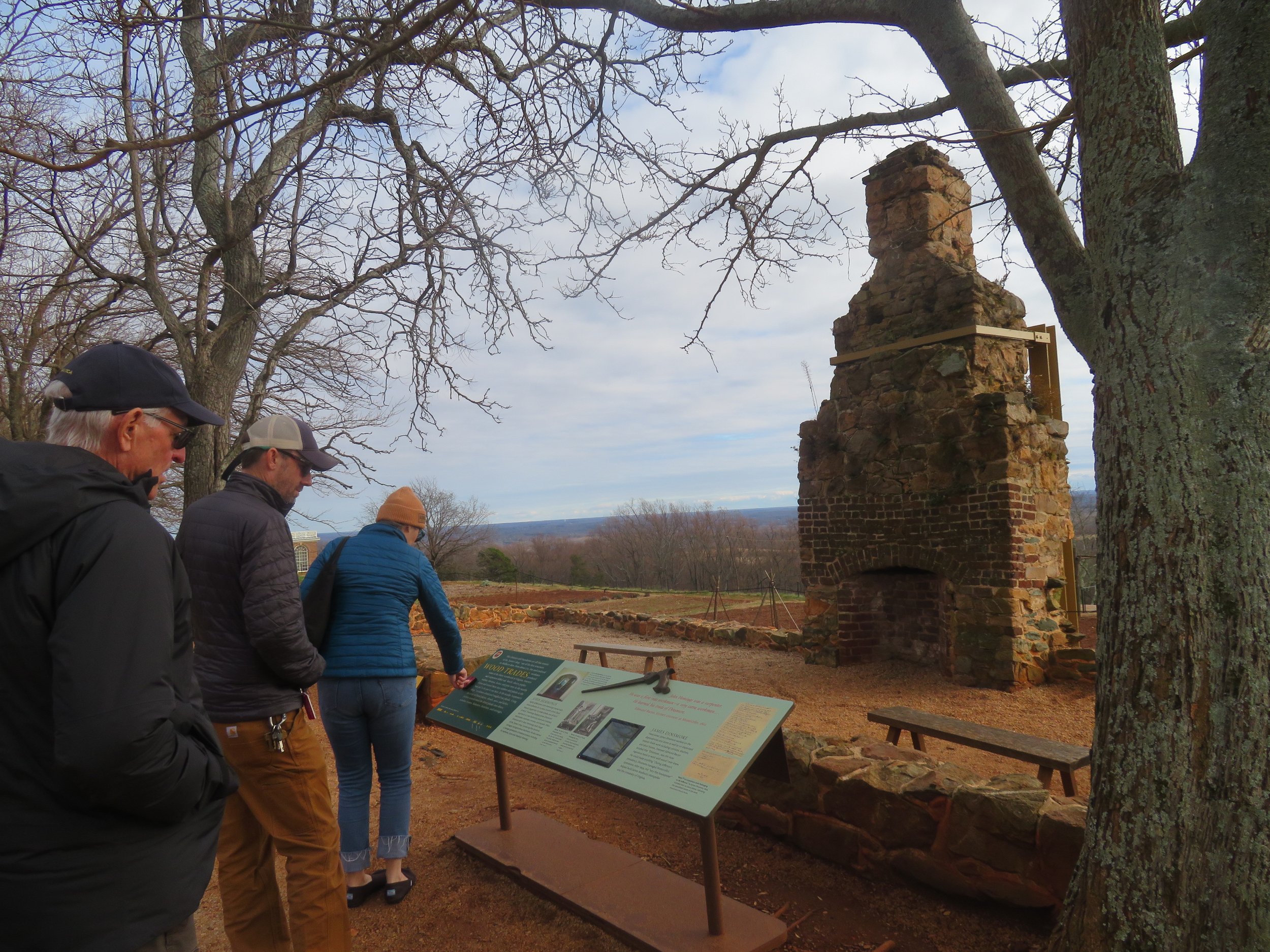Jefferson's Monticello
/While we were visiting Brennan and Hannah in Richmond just after Christmas, we all decided to take a quick trip to Charlottesville, VA to explore Monticello, Jefferson’s magnificent estate. A topic of discussion while riding… Is that pronounced Mon-ti-chell-o or Mon-ti-cell-o. The pronunciation continues to be a bone of contention. Hannah assured us it’s correctly pronounced Mon-ti-chello and we went with that.
The day was cold and gray, but there were still crowds of people visiting and exploring the grounds. We opted for a self-guided tour. No senior discounts are given and the $22 entry fee seemed a bit rich since it did not include entry into the house itself, but we were there and the grounds looked rather spectacular even on a gray day, so we paid up and headed off.
Thomas Jefferson was quite a guy. Second Vice President of the USA and Third President of the United States, he helped author the Declaration of Independence and the Statute of Virginia for Religious Freedom. He was a lawyer and a founder of the University of Virginia. He was a philosopher and writer as well as an architect. Monticello was his masterpiece… designed, worked and reworked over a period of four decades.
Third president of the United States - Thomas Jefferson
During his presidency, he expanded the USA by purchasing the Louisiana Territory from France and hiring Lewis and Clark to explore the newly purchased lands subsequently referred to as the Journey of the Corps of Discovery.
Lest we forget, he was also a slave owner (as was George Washington, for that matter) enslaving 600+ people during the course of his life, the most notable of whom was Sally Hemings, mother of several of his children. I recently read “The Hemingses of Monticello- An American Family”, a Pulitzer prize winner by Annette Gordon-Reed, a well-documented (and very long) chronicle of the Hemings family.
Back to our Monticello visit…
Though there was a shuttle, we preferred walking the pathways of the estate. Monticello itself is on a hilltop and thus the path was a steady incline to the top. Along the way, we stopped at the Jefferson family cemetery where Jefferson, along with other family members, is buried.
Just below the hilltop, a ‘contemplative site’ comprised of a 60’ ‘steel structure pierced with the names of the 607 men, women and children known to have been enslaved by Jefferson’ was erected in 2023 to reflect upon and honor those enslaved.
Monticello was a self-contained, self-sufficient estate that had animals, vast vegetable gardens and fruit and nut trees. Additionally, there were iron works, carpentry shops, a joinery, textile workshops, stables, a dairy, smokehouses… most everything the estate needed to be independent and self-sustaining.
Jefferson described Monticello as ‘my essay in Architecture’. It’s a beautiful building… smaller than we imagined, but gracious, elegant and stately.
There was more to see and do and on a sunny, warmer day, we might have continued, but after an hour or so, we were chilled and thirsty. So after a visit to the gift shop, we decided a visit to the nearby Potter’s Craft Cidery seemed an excellent idea. Housed in Neve Hall, a historic Episcopal chapel built in the early 20th century, the cidery was warm and welcoming. We warmed up, enjoyed a flight of ciders and good conversation with Brennan and Hannah then headed back to Richmond.
Our stay in Richmond was short, but sweet. Before we left, Brennan suggested a ‘blue highway’ for our trip home and, as usual, he was spot on.
Join us for a cross-country road trip on US-70, one of the original numbered highways from 1926.

















